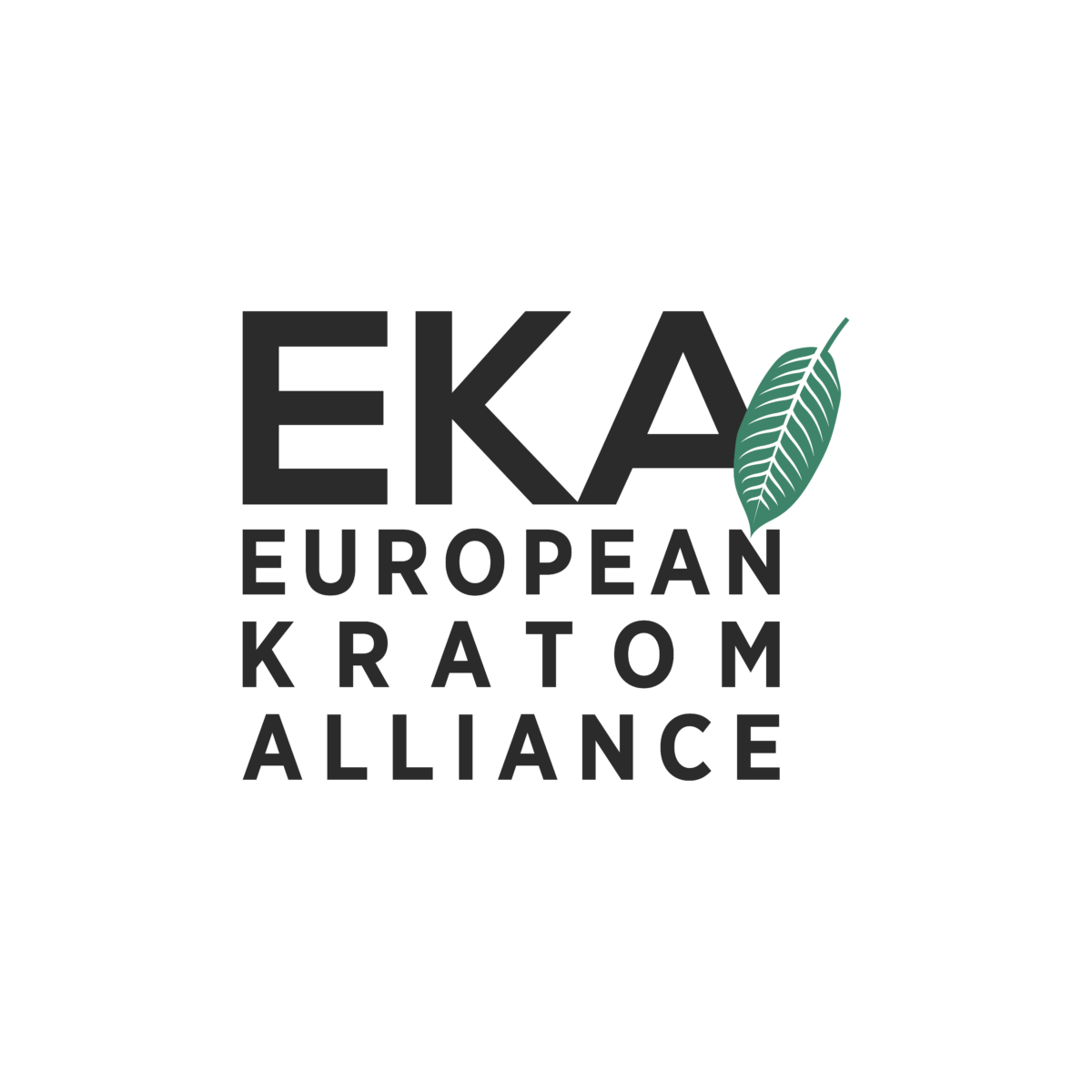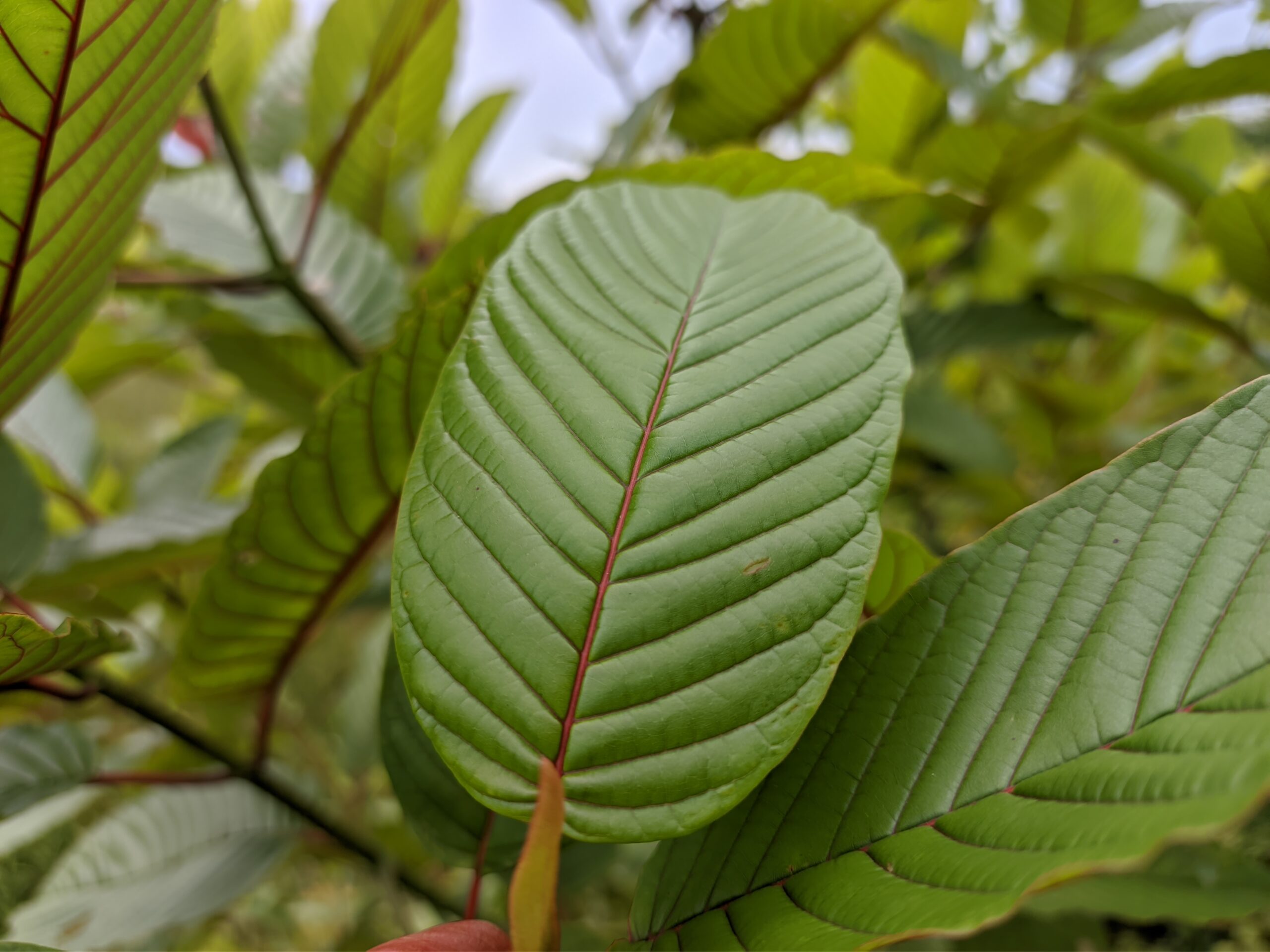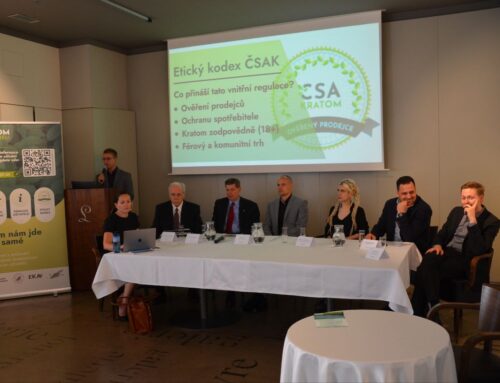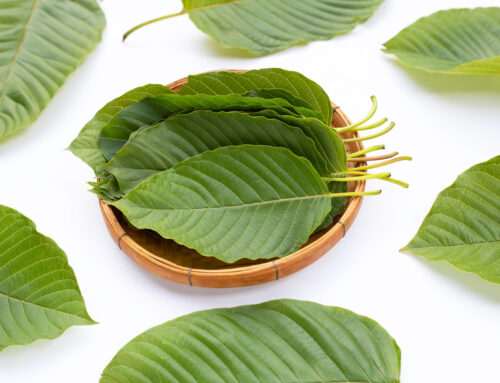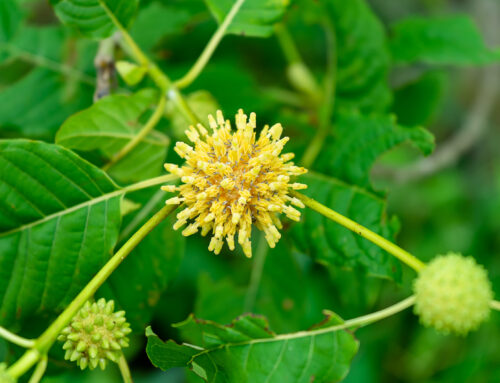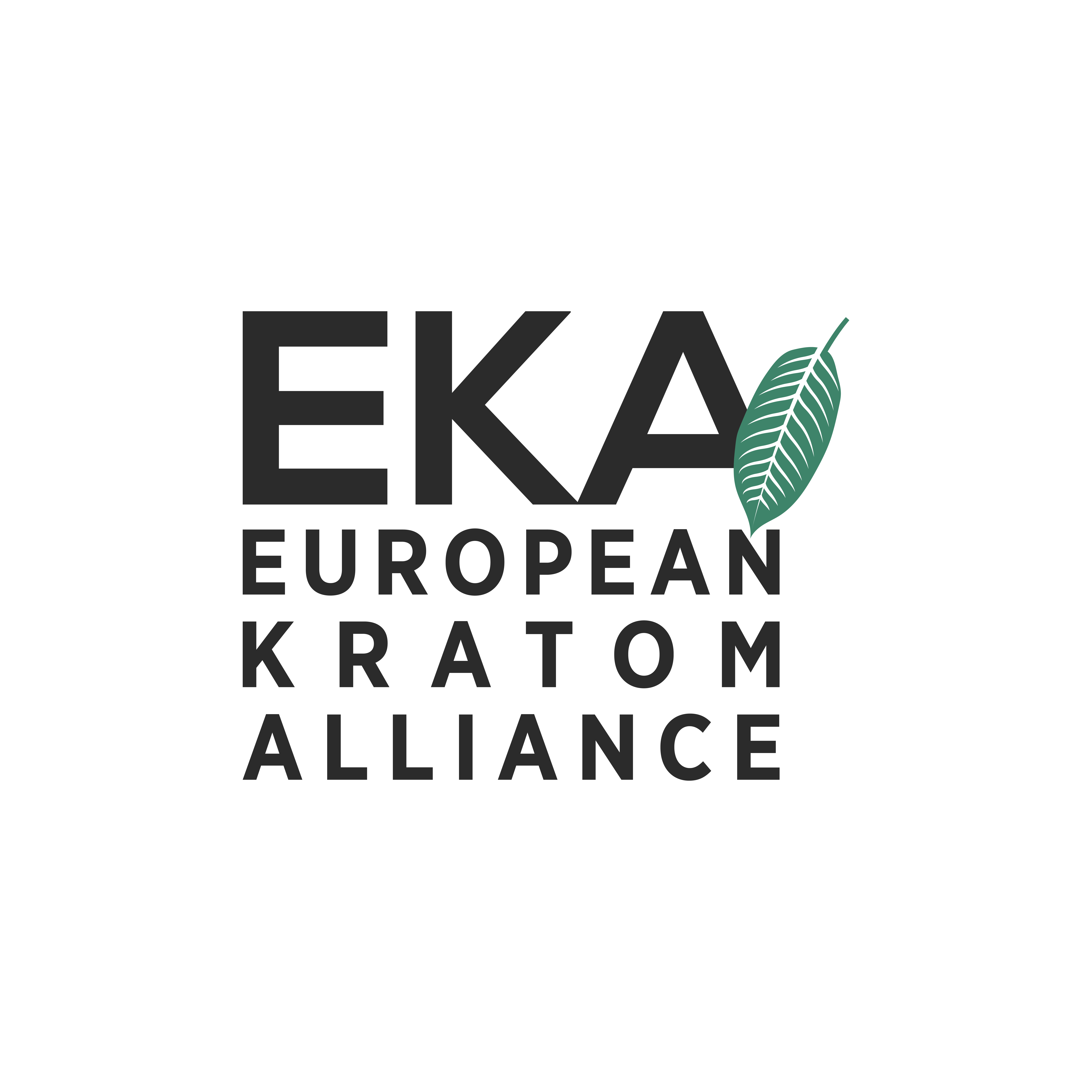A pre-review of kratom (Mitragyna speciosa), a tree native to Southeast Asia, and its two principal psychoactive alkaloids (mitragynine, 7-hydroxymitragynine), is on the agenda of the 44th WHO Expert Committee on Drug Dependence (ECDD) for their 11-15 October 2021 meeting. Kratom and its compounds have not previously been reviewed by WHO and are not currently under international control, but a number of Southeast Asian and European countries as well as Australia have varying levels of national controls in place. How did kratom get on the ECDD agenda? And what are the chances that this process will ultimately lead to kratom being put under international control?
*8 October 2021 – advance copy submitted to ECDD
Martin Jelsma – Transnational Institute1
Download the full policy commentary here.
In this policy commentary, we first take a look at the developments in Southeast Asia, where the criminalization of kratom significantly increased after Prime Minister Thaksin declared a war on drugs in Thailand in 2003. This intensified law enforcement in the region put kratom on the radar of UNODC’s SMART programme. Yet Thailand, where repressive enforcement of the kratom ban had reached dramatic proportions following Thaksin’s drug war, moved to lift the ban in August 2021. We then look at how kratom became an issue of concern when it was labelled a ‘New Psychoactive Substance’ (NPS) and how procedures established to expedite the scheduling process for NPS, especially UNODC’s Early Warning Advisory, propelled kratom onto the ECDD agenda. The origins of the WHO pre-review of kratom raise fundamental questions about the scheduling procedure, especially the impact of putting a plant with a long history of traditional use in the NPS context, and the role played by UNODC in the process. Finally, we explore the different scenarios that could unfold and assess the risk that―once again―perceived problems with certain plant-based substances in the Global North, would lead to a global condemnation of centuries-old and largely unproblematic traditions with psychoactive plants in the Global South.
Kratom in Southeast Asia
Kratom or ketum2 is an indigenous tropical tree in parts of Thailand, Malaysia, Myanmar, Indonesia, Papua New Guinea and the Philippines. The leaves are used traditionally by women in villages as a household remedy for common ailments such as fever, cough, diarrhoea, hypertension, diabetes, rheumatism, pain and anxiety. Men primarily chew the leaves or drink kratom juice or tea in the morning to improve work productivity and to combat fatigue, and in the evenings to relax and socialise. Kratom therefore also serves as a substitute for alcohol among Muslims.3 When opium use was still common kratom was regularly used as an alternative in times of scarcity or high prices, or to ease opium withdrawal symptoms. Competition with opium was the main reason for introducing the 1943 Kratom Act in Thailand when opium was still legal under state monopoly. This was the first national kratom ban in the region and was initially only loosely enforced. In 1979 Thailand moved kratom to category V under the Narcotics Drugs Act, in the same―least restrictive and punitive―schedule as cannabis, opium, and hallucinogenic mushrooms, making it illegal to use, buy, sell, grow or harvest kratom, and requiring existing trees to be cut down.4 Myanmar followed with a similar ban in 1993, and Malaysia put kratom in 2003 under control of its 1952 Poison Act which mainly focuses on the possession and trade of kratom rather than on consumption or cultivation.5
Repressive enforcement of the kratom ban in Thailand only really started with Thaksin’s war on drugs, which was responsible for about 3,000 extrajudicial killings between February to April 2003. Thaksin’s policy also fuelled conflict in the predominantly Muslim southern provinces where in the following years at least 5,700 people were killed, especially among the ethnic Malay population.6 Kratom law enforcement in the south of the country reached devastating levels in the following decade, including mass arrests and military operations to cut down trees significantly increasing political tensions with Muslim communities. Criminal prosecutions of the use of kratom leaves rose from about 1,000 in 2004-2005 to 6,000 in 2009 to almost 19,000 in 2018; and kratom-related court cases represented about one sixth of the total of more than 300,000 drug-related court cases in Thailand between January and October 2019.7 “By associating kratom with the Malay insurgent groups and vilifying the substance, the police have been able to constantly monitor and invade the communities of Malay peoples under the pretense that they are policing kratom.”8 This led to “the emergence of a new conflict between government officers and advocates of cultural rights in the region”,9 according to the Thai academic research group on kratom that played a crucial role in building the evidence base for the policy changes in recent years. The crack-down also coincided with the emergence of new consumption patterns among youth, especially the popularity of a cocktail under the name ‘4×100’ – a mixture of kratom tea, cough syrup containing diphenhydramine or codeine, a caffeine-containing soft drink (e.g. Coca-Cola), and ice cubes.10
Thailand’s repressive approach pushed the issue onto the regional anti-drug coordination mechanisms of ASEAN and UNODC, triggering increased law enforcement against kratom in neighbouring countries as well. “Kratom was ranked the number one drug of concern in 2004” by Thailand, according to the first 2007 report of UNODC’s programme to improve data collection on Amphetamine-Type Stimulants (ATS) in the region, though it “was not listed in 2005, and currently is ranked tenth with an abuse trend reported to be on the increase”.11 “Kratom is problematic in Myanmar and Thailand”, according to the same report, mentioning the arrests in 2006 in Myanmar of almost 500 people for kratom offences (out of a total of about 4,000 drug arrests) as a new ‘major development’. Ever since then the SMART reports have included data on kratom seizures and arrests. In Malaysia, around 700- 900 people were arrested every year between 2012-2016.12 Law enforcement authorities in Myanmar reported eradication of illicit kratom cultivation sites in the Tanintharyi Divison in the country’s far south in 2013 and 2014.13 In 2013, ASEAN placed kratom on the ‘Negative List of Substances for Traditional Medicines and Health Supplements’ banning intra-ASEAN trade in kratom-based products (a revision of the list is scheduled for 2022).14
Earlier in 2004, Indonesia’s Food and Drug Administration had added kratom to the national list of ingredients of substances that were prohibited for use in traditional medicines and food supplements. This regulation, renewed in 2016, is aimed at kratom manufacturing for domestic markets and does not ban kratom consumption and export.15 However, Indonesia’s National Narcotics Agency (BNN), subsequently decided in 2017 to add kratom to its list of New Psychoactive Substances, recommending kratom be scheduled as a Schedule I narcotic drug. A transition period of five years was agreed to find alternative income opportunities for the estimated 112,000 people involved in growing, harvesting and processing kratom in West Kalimantan,16 mainly for legal export to the expanding U.S. market.17 The wisdom of the ban, which the BNN reiterated in 2019, has been questioned by local government authorities in West Kalimantan, as well as by Indonesia’s Deputy Minister of Environment and Forestry.18 In response to this controversy, the Ministry of Health commissioned its research department to conduct a study that resulted in a comprehensive report published in 2019. The report highlights kratom’s botanical and chemical properties and its significance as a source of livelihood and traditional or Indigenous medicine. Detailing the different contexts in which kratom is cultivated in Kalimantan, the report also emphasises kratom’s ecological importance, as well as its potential in supporting sustainable development.19 Implementation of the ban has now been postponed until 2024 to have time for further research and discussion.
In Malaysia, a proposal of the National Anti-Drug Agency to move kratom from the Poison Act to the Dangerous Drugs Act was halted by Parliamentary opposition. Kratom production in Penang, in the North of Malaysia, represents a significant livelihood for the local population.20 In March 2019, Malaysia’s National Anti-Drugs Agency organised a side event at the Commission on Narcotic Drugs (CND) on ‘Addressing the threat of kratom and methamphetamine in Malaysia’. And in March 2020, during the CND discussion about WHO scheduling recommendations, Indonesia called for attention to kratom and its ‘high potential for addiction’. Studies in the region have confirmed that “prolonged use can lead to dependence and withdrawal problems”, but that most kratom users manage to deal with these symptoms on their own and that it does “not appear to cause any significant impairment in their social functioning”.21 Also a survey among kratom users in the U.S., referred to in the ECDD pre-review report, indicated “mild withdrawal symptoms”.22
Meanwhile, Thailand has made a complete u-turn on their policy towards kratom . From 2019, the use of kratom (as well as cannabis) in traditional medicines was permitted, and cultivation, possession and use in Southern villages was decriminalized under a community control model. Then in May 2021, kratom was deleted from the Narcotics Drugs Act, which came into effect on 24th August. This move lifted most restrictions with regard to the cultivation, trade and use of kratom leaves. Those who want to manufacture kratom products, including medication, dietary and herbal products, must obtain a permit from the Thai Food and Drug Administration (FDA).23 Lower courts still ruled on no less than 50,834 kratom charges in 2020, and 22,076 charges in 2021; and 11,455 of those cases reached public prosecutors. But all those records will now be cleared and more then 1,000 people still in prison for kratom offences are to be released.24 “The legalisation of kratom in Thailand ends a legacy of rights- abusing criminalisation of a drug that has long been used in traditional, rural communities in the country,” according to Human Rights Watch.25
Kratom emerges as a ‘New Psychoactive Substance’
UNODC’s Global SMART Programme, launched in September 2008 in Bangkok, was initially set up to monitor illicit synthetic drugs, when Amphetamine-Type Substances (ATS) became an important feature on the regional and global illicit drugs markets. Kratom appeared in the first major SMART report in 2011 under the heading ‘Unregulated products sold in ATS markets’. Manufacturers and traffickers exploit the lack of controls as these ‘legal highs’ are not controlled by the international drug control treaties; “Plants with psychoactive properties sold in ATS markets include: Kratom”, according to the report.26 The appearance of many synthetic ‘legal highs’, primarily in Europe, North America, Australia and New Zealand became the subject of CND resolutions in 201227 and 201328 on ‘New Psychoactive Substances’, prompting the UNODC to broaden the initial ATS-focus of its SMART programme and to establish a new Early Warning Advisory (EWA) system for NPS. UNODC’s first global situation assessment on ‘The challenge of new psychoactive substances’ in 2013, listed a number of categories of NPS: synthetic cannabinoids, synthetic cathinones, phenethylamines and piperazines, but also ketamine and a special category of ‘plant-based substances’ with special sections on kratom, khat and Salvia divinorum.29 Branding kratom as an NPS subsequently became a normal feature even in the SMART reports on Southeast Asia, where traditional uses have been recorded for centuries. “Another NPS widely used in the region, notably in Malaysia, Myanmar and Thailand, is kratom”, according to the 2013 report.30 And the 2015 report referred to ‘A growing market for plant-based substances’ as an issue of concern in its chapter on ‘The NPS market in East and Southeast Asia and Oceania’, mentioning kratom as well as khat.31
According to the INCB, “The definition of ‘new psychoactive substances’ used for the purposes of the early warning advisory encompasses both synthetic and plant-based substances (such as khat (Catha edulis), kratom (Mitragyna speciosa) and Salvia divinorum), as well as substances with established medical uses (e.g., ketamine). What all new psychoactive substances have in common is not necessarily that they have recently been invented but that they have recently emerged on the market and have not been scheduled under the international drug control conventions.”32 And of course, certain kratom- related substances have only recently emerged in ‘western’ markets. Initially, some obscure products labelled ‘kratom acetate’, ‘mitragynine acetate’ or ‘Krypton’ appeared on the NPS radar of the EMCDDA in Europe and caused legitimate concern among health authorities. Most of those early substances, however, did not even contain mitragynine, and ‘Krypton’-related fatalities in Sweden and Germany turned out to be caused by O-desmethyltramadol, a synthetic opioid. Those substances indeed belonged in the NPS category and close scrutiny was required to find appropriate policy responses to the wide variety of NPS appearing on the market.
The inclusion in the NPS category of plants like kratom and khat, however, that have centuries of traditional use in certain parts of the world, is problematic, including when those plants reach new markets. Over the past decade, powdered kratom leaves have entered U.S. and European markets on a large scale, used by many to self-medicate, as a substitute for pharmaceutical opioids or for its mild stimulant, mood-enhancing or relaxing properties. The U.S. market in particular has grown exponentially in the past decade, with estimates for 2016 that several million consumers purchased kratom products from more than 10,000 retail outlets with an estimated annual market of more than 200 million US dollars.33 The Food and Drug Administration (FDA), alarmed by the scale of imports of kratom products, ordered the seizure of more than 25,000 pounds of raw kratom material and nearly 90,000 bottles of dietary supplements labeled as containing kratom between 2014-2016, ‘‘to safeguard the public from a dangerous product’’.34 The US Drug Enforcement Administration (DEA) announced in 2016 that “to avoid an imminent hazard to the public safety” it intended to include mitragynine and 7-hydroxymitragynine in Schedule I, arguing that “available information indicates that these opioid substances, constituents of the plant kratom, have a high potential for abuse, no currently accepted medical use in treatment in the United States, and a lack of accepted safety for use under medical supervision.”35 The announcement triggered a massive public response that led the DEA to reconsider its action and allow time for more consideration.36
“An important consideration”, according to leading scientists, “is that banning the availability of kratom through scheduling could precipitate public health problems that do not presently exist or are at very low levels, because this would shift the marketplace from a largely lawful retail market to illicit manufacturers and distributors with no regulated labeling, purity or content standards, or effective ability to remove adulterated products from the market.”37 Instigated by the American Kratom Association, several US States such as Utah, Georgia, Arizona, Nevada and Oklahoma, have since introduced Kratom Consumer Protection Acts, introducing regulation and safety controls.38 Such state-level legislation is also meant to protect consumers against the threat of a federal ban which the FDA and the DEA continue to push for. This effort includes feeding data on kratom-related health risks into the UN drug control system that could potentially lead to a global ban that the US subsequently would have to implement, thus circumventing and overruling ongoing domestic opposition against a federal ban.
UNODC’s EWA mechanism, established in 2013, was enhanced after the 2016 UNGASS had expressed special concerns about NPS and the need to speed up the WHO review process to cope with the NPS threat. The UNGASS Outcome Document called on countries to strengthen the capacity of the WHO, the UNODC and the INCB “to prioritize the review of the most prevalent, persistent and harmful new psychoactive substances and to facilitate informed scheduling decisions by the Commission on Narcotic Drugs”; and to actively participate “in early warning networks and promote the use of relevant surveillance lists and voluntary controls”.39
Several meetings were convened in the months after the UNGASS in April 2016 to discuss the “need to establish a new surveillance system at the international level to facilitate the scheduling process and to respond effectively to prevent harm to public health arising from the use of NPS. The maintenance of a WHO surveillance list (with special attention to NPS) would allow information to be collated that could then be used to inform future ECDD deliberations as well as in the process of prioritizing substances for review.”40 After consideration at the third UNODC-WHO Expert Consultation on NPS in May 2016, “it was proposed that a list of substances under surveillance by WHO should be actively maintained through the proactive collection of data from international organizations (e.g. UNODC, the INCB and the World Customs Union), regional organizations (e.g. EMCDDA) and national observatories and Member States.”41
In 2016, the ECDD initiated a Working Group for the prioritization process for NPS and for placing substances on its surveillance list. The first Working Group meeting in May 2016 established that the “primary criteria for harm would be fatalities, in addition to other serious adverse events (e.g. non- fatal intoxications) and other public health risks (e.g. reports of DUID and harm to others)” for which it required “direct evidence of adverse effects such as forensic data regarding overdose events; fatal and non-fatal intoxications; laboratory data that are predictive of adverse events; and reports coming directly from users or health authorities in contact with users (with some evidence that the substance in question is correctly identified).”42
The 2019 Ministerial Declaration noted that “the adverse health consequences of and risks associated with new psychoactive substances have reached alarming levels”, and committed to strengthening the work of the CND with the WHO, the INCB as well with UNODC “to continue to facilitate informed scheduling decisions on the most persistent, prevalent and harmful substances, including synthetic drugs and new psychoactive substances”.43 UNODC basically became the lead entity for NPS early warning data collection through its existing Global SMART Programme and the EWA mechanism, financially supported by the Governments of Australia, Canada, China, Japan, New Zealand, South Korea, Russian Federation, Singapore, Thailand, the UK and the US. Since then, “the EWA has enhanced its features by including toxicology data in order to identify the NPS which pose the greatest threat to public health, thus, assisting in the prioritisation of substances assessed for international control as well as legislative responses at the national level.”44 With that mandate UNODC started to produce regular updates on Current NPS Threats, also meant to provide input to the WHO Working Group.
Kratom features prominently in the second update report in January 2020, including a graph on ‘NPS detected in fatalities reported to the UNODC EWA in 2019’ which showed that by far the largest amount (46%) of reported fatalities were related to kratom, even higher than those related to synthetic opioids (17%). The text makes clear that this was based on only 47 cases reported by the US and Thailand, both countries with millions of regular kratom users, and clarifies that post-mortem “identification of an NPS does not necessarily mean it was causal to the outcome”. In fact, there “were no cases in which kratom was deemed to have caused or have significantly contributed to death“, due to other circumstances and the presence of more toxic substances, mainly opioids.45 But in the midst of the political attention and scaremongering around NPS, the tone was set by the report’s biased presentation of data and rather exaggerated conclusion that “A high proportion of reported NPS fatalities in 2019 involved kratom”.
A few months later, in April 2020, the ECDD Working Group set up to prioritise NPS for WHO surveillance and/or-review had its 8th meeting, and recommended including kratom and its two principal compounds on the WHO surveillance list. The recommendation was adopted by the 43rd ECDD meeting that took place virtually between 12–16 October 2020.46 That same month, the UNODC released its third EWA report, now claiming that there had been a few cases where kratom had been identified in post-mortem analysis as a substance that had contributed to the person’s death. “In the previous volume of Current NPS Threats, Kratom cases accounted for 46% of all NPS detected in fatalities. Nevertheless, there had not been a single case reported in which Kratom was causal to the outcome. However, since July 2019, at least 14 cases have been identified where Kratom was deemed causal (n=7) or contributory (n=7) to the fatality. Of the seven causal PM cases, two where labelled single drug use cases.“47
“A pre-review was initiated following a proposal from an international organization with supporting information regarding fatalities due to kratom use”, according to the ECDD pre-review report, apparently referring to UNODC.48 Once a pre-review process is initiated, apart from a literature survey, the ECDD also collects its own information from Member States through the WHO Questionnaire for Review of Psychoactive Substances, and a total of 35 countries provided information on kratom over the summer of 2021. Of those, six countries reported the level of negative health impact due to kratom consumption as ‘especially serious’, and seven as ‘substantial’; for the other countries the health impact was ‘negligible’ or unknown. With regard to fatalities, the U.S. reported that mitragynine had been positively identified in 583 postmortem cases during 2013-2020, and seven additional cases were reported from Canada and four European countries. Among all those, however, there were only two deaths (one in North America, one in Europe) where kratom was the only substance involved.49
Potential outcomes and conclusions
The origins of the WHO pre-review of kratom, and especially putting it in the NPS context and the role played by UNODC, raise fundamental questions about the scheduling procedure itself in this case. A clearer definition of NPS is required, to distinguish between traditional uses of psychoactive plants in their regions of origin, the globalisation of the market of herbal medicines and natural health supplements, and derivatives using concentrated alkaloids in NPS-type products for recreational purposes. In the case of non-scheduled substances including NPS, the mandates of UNODC, the INCB and the WHO seem to have become blurred to the extent that it has compromised the treaty- mandated leading role of the WHO in the scheduling process. “The 1961 and 1971 Conventions entrust WHO with the responsibility of reviewing and assessing substances to determine whether they should be controlled under the Conventions”.50
WHO recommendations are presented to the CND for a decision by vote on the basis that WHO’s assessment is determinative for scientific and medical matters. Adoption or rejection requires a simple majority of the 53 CND Member States under the 1961 Convention and a two-thirds majority in the case of the 1971 Convention, the latter also leaving the option to decide to place a substance in another schedule than the one recommended by WHO. The premise should be that there is no treaty mandate for the INCB or a role for UNODC for psychoactive plants, medicines or other substances that are not scheduled under the 1961 or 1971 conventions. In principle, collecting data on non-scheduled substances that may pose a significant risk to public health, should be the prerogative of WHO, similar to the mandate they have on alcohol and tobacco, substances the INCB and UNODC so far have not addressed either.
The previous section, however, has shown how the INCB and especially UNODC gradually conquered terrain with regard to data collection and reporting about NPS, on the basis of CND resolutions, the 2016 UNGASS Outcome Document and the 2019 Ministerial Declaration. It also showed that giving UNODC a role in the prioritization of substances for review carries the risk that political and funding considerations influence how data are presented. While a critical review, required for scheduling recommendations, can only be initiated by Member States or by the WHO itself, the WHO Guidance specifically allows UNODC to propose a pre-review, as happened in the case of kratom. “A pre-review is initiated when a proposal has been submitted to the Expert Committee with supporting information either by (1) the Secretariat, (2) any member of the Expert Committee, or (3) representatives of other organizations invited to participate in the Expert Committee meeting” as observers, such as representatives of UNODC, the INCB or NGOs in official relations with WHO.51
The inclusion of kratom in the NPS category and the biased presentation of data, especially on supposed kratom-related fatalities, raise legitimate questions about the origins of the pre-review. But at least by now, the process is fully in the hands of the WHO-ECDD which has a solid reputation in terms of assessing available scientific data before making any scheduling recommendation. The procedure is still at an early stage, so there is no reason to think we are anywhere close to an international ban on kratom yet. Several scenarios may unfold from this point on:
The ECDD may decide on the basis of the pre-review not to proceed to a critical review but to keep kratom and its compounds under surveillance to gather more information in the future. A lot of scientific research has been done in the past decade on traditional uses in Southeast Asia as well as on self-medication in the U.S. in the context of the opioid crisis that cautions against taking any steps in the direction of international scheduling.
If the ECDD decides to undertake a critical review, the outcome would also not immediately lead to a recommendation to bring kratom under international control. In the case of khat, perhaps the most comparable recent example, the ECDD decided after a critical review that “The level of abuse and threat to public health is not significant enough to warrant international control. Therefore, the Committee did not recommend the scheduling of khat.”52 A difference, however, in that case was that the main active compounds of khat, cathinone and cathine, had already been scheduled under the 1971 Convention. There have been several other cases where the ECDD recommended on the basis of a critical review against scheduling, for example with ketamine and tramadol. The fact that the therapeutic usefulness of kratom has recently been acknowledged in the case of Thailand legalizing kratom as a traditional medicine, and in several US States under Kratom Consumer Protection Acts, are important considerations that the ECDD will take into account.
If a critical review would lead to scheduling recommendations, an important distinction will be whether the ECDD decides to consider kratom and its principal alkaloids for inclusion under the 1961 or the 1971 Convention. Kratom’s mixed stimulant and opioid-like properties, and the comparison with khat and its alkaloids, would be an argument for consideration under the 1971 Convention. The 1971 Convention deliberately excluded plants containing psychotropic substances from international control, so it would go against the control principles of the 1971 Convention to add kratom itself to one of its schedules. But the ECDD could -similar to cathinone and cathine- recommend to only add mitragynine and 7-hydroxymitragynine to the schedules of the 1971 Convention, which would enable countries to allow kratom in its natural form. Moreover, the 1971 Convention includes a ‘principle of non-acceptance’ for countries unable to implement new scheduling decisions under certain conditions. The 1961 Convention, to the contrary, does not allow to make any distinction between plant raw material and the psychoactive compounds it contains, so considering kratom under the Single Convention would require countries to schedule both, and implementing the scheduling decision would be obligatory for all treaty parties.
Finally, an unlikely but nightmare scenario that needs to be averted, is that in the case the ECDD recommends against international control, a Member State still calls for a CND vote to schedule kratom and/or its alkaloids under the 1971 Convention, contravening the WHO advice. Erroneously, UNODC’s brochure on ‘Scheduling Procedures Under the International Drug Control Conventions’, claims that under the 1971 Convention, “the Commission may decide (even contrary to the recommendation of WHO) to place or not place a substance under international control”.53 While true that the margin of discretion afforded to the CND under the 1971 treaty is broader compared to the 1961 Convention, the Commentary makes clear that if the WHO finds that a substance does not meet the basic criteria for international scheduling, and “by consequence expressly or impliedly recommends in its communication to the Commission that the substance should not be controlled, the Commission would not be authorized to place it under control. Doing so would be incompatible with the provision that the WHO assessment should be ‘determinative as to medical and scientific matters’”. UNODC’s assertion that the CND would in fact be authorized to add a substance to any of the 1971 schedules contrary to a WHO recommendation not to place it under international control, seriously undermines the WHO treaty mandate and should be contested and rectified, before any Member State tries to use it and sets a precedent.
In conclusion, the fact that a pre-review of kratom has appeared on the agenda of the ECDD has triggered legitimate concerns, especially in Southeast Asia where policies have recently started to turn away from the devastating impacts of repressive implementation of national kratom bans, and in the U.S. where millions of people have found it to be an effective alternative to pharmaceutical opioids in the midst of a public health crisis. The rapid expansion of the international kratom market and the appearance of a wide variety of kratom-related products marketed either as a herbal medicine, health supplement or for ‘recreational’ purposes certainly requires regulatory attention from health authorities in order to protect the safety of consumers. Fortunately, a lot of research has become available over the past decade, providing evidence on health risks as well as therapeutic benefits that merit further exploration. Banning kratom by adding it to the schedules of the UN drug control treaties would have serious implications (especially where criminal penalties for use and possession are imposed), would undermine ongoing efforts to regulate the kratom market from a public health perspective, and would repeat historical scheduling errors made in the past with other psychoactive plants.
Notes and sources
1 Comments and editorial suggestions on an earlier draft from Tom Blickman, Ann Fordham and Dania Putri, have been incorporated in this final version.
2 Different names are used in local languages across the region: kratom is mostly used in Thailand, and ketum in Malaysia and Indonesia; other names used are biak-biak or sepat in Malaysia; kedamba, purik or kayu sepat in Indonesia; beinsa or bein-sa-ywat in Myanmar; and mambog, lugub or polapupot in the Philippines.
3 Singh et al., Changing trends in the use of kratom (Mitragyna speciosa) in Southeast Asia, Hum Psychopharmacol Clin Exp. 2017;32:e2582. https://doi.org/10.1002/hup.2582
4 Saingam et al., Pattern and consequences of krathom (Mitragyna speciosa Korth.) use among male villagers in southern Thailand: A qualitative study, International Journal of Drug Policy 24 (2013) 351– 358. http://dx.doi.org/10.1016/j.drugpo.2012.09.004
5 Khalil, S., Ahmad, R., & Abdullah, J. S. A, Enforcement status of the poison act 1952 against offences related to Kratom (mitragyna speciosa korth) misuse in Malaysia, UUM Journal of Legal Studies, 2020, 11(1), 75-93. https://doi.org/10.32890/uumjls.11.1.2020.6928
6 Thaksin’s ‘war on drugs’ a crime against humanity, Bangkok Post, 13 December 2013. https://www.bangkokpost.com/opinion/opinion/384560/thaksin-war-on-drugs-a-crime-against-humanity
7 Sayamol Charoenratana, Cholnapa Anukul, Apinun Aramrattana, “Attitudes towards Kratom use, decriminalization and the development of a community-based Kratom control mechanism in Southern
Thailand”, International Journal of Drug Policy 95 (2021) 103197, p.2. https://doi.org/10.1016/j.drugpo.2021.103197
8 Mike Brier, The Quiet War Against Kratom: Thailand’s Failed War on Drugs and the Traditional Herb that may Help to Fix It, May 1, 2018. https://www.chiangmaicitylife.com/citylife-articles/quiet-war-kratom-thailands- failed-war-drugs-traditional-herb-may-help-fix/
9 Sayamol Charoenratana et al. (2021), op. cit., p. 2.
10 Pascal Tanguay, Kratom in Thailand – Decriminalisation and Community Control?, TNI/IDPC Series on Legislative Reform of Drug Policies Nr. 13, April 2011. https://www.tni.org/files/download/kratom-briefing- dlr13.pdf
11 UNODC, Patterns and Trends of Amphetamine-Type Stimulants (ATS) and Other Drugs of Abuse in East Asia and the Pacific 2006, A Report from Project: TDRASF97 Improving ATS Data and Information Systems, June 2007, p. 121.
12 Khalil et al. (2020), op. cit., p. 82.
13 UNODC, The Challenge of Synthetic Drugs in East and South-East Asia and Oceania, Trends and Patterns of Amphetamine-type Stimulants and New Psychoactive Substances, A Report from the Global SMART Programme, May 2015, p. 30.https://www.unodc.org/documents/southeastasiaandpacific/Publications/2015/drugs/ATS_2015_Report_web.pdf
14 Association of South East Asian Nations (ASEAN), Annex 1, ASEAN Guiding Principles for Inclusion into or Exclusion from the Negative List of Substances for Traditional Medicines and Health Supplements, Version 3.0, adopted at the 18th ASEAN Traditional Medicines and Health Supplements Scientific Committee Meeting (ATSC), 11-13 March 2013, Nay Pyi Taw, Myanmar.
15 Wahyono, S, et al., Kratom: Prospek Kesehatan dan Sosial Ekonomi, Lembaga Penerbit Badan Penelitian dan Pengembangan Kesehatan, Kementerian Kesehatan Republik Indonesia, 2019.
16 112.000 Warga Hidupnya Bergantung Budi Daya Kratom, Gubernur Kalbar: Pelarangan Ditunda Dulu, Kompas, 25 November 2020, https://regional.kompas.com/read/2020/11/25/11474061/112000-warga- hidupnya-bergantung-budi-daya-kratom-gubernur-kalbar-pelarangan
17 U.S. Hunger For Opioid Alternative Drives Boom in Borneo Jungle – Indonesia is the main supplier of kratom, a popular painkiller, Bloomberg, 5 June 2018. https://www.bloomberg.com/news/features/2018-06-05/u-s- hunger-for-opioid-alternative-drives-boom-in-borneo-jungle
18 Wamen LHK Nilai Kratom Bernilai Ekonomis, Pontianak Post, 19 November 2020, https://pontianakpost.co.id/wamen-lhk-nilai-kratom-bernilai-ekonomis/
19 Wahyono, S, et al. (2019), op. cit..
20 Ketum doesn’t cause addiction, more studies needed, The Sun Daily, Kuala Lumpur, 28 February 2018. https://www.thesundaily.my/archive/ketum-doesnt-cause-addiction-more-studies-needed-JUARCH529132; Cultivation of banned ketum an open secret in Penang, the Vibes.com, Malaysia, 16 January 2021. https://www.thevibes.com/articles/news/14033/cultivation-of-banned-ketum-an-open-secret-in-penang;
21 Singh et al., Changing trends in the use of kratom (Mitragyna speciosa) in Southeast Asia, Hum Psychopharmacol Clin Exp. 2017;32:e2582. https://doi.org/10.1002/hup.2582
22 WHO Expert Committee on Drug Dependence, Pre-Review Report: Kratom (Mytragyna speciosa), mitragynine, and 7-hydroxymitragynine, Forty-fourth Meeting, Geneva, 11-15 October 2021 (Unedited – Advance Copy – 7 September 2021), p. 34. https://www.who.int/publications/m/item/kratom-mitragynine-7- hydroxymitragynine-critical-review-report
23 Kratom production needs FDA approval, Bangkok Post, 4 September 2021. https://www.bangkokpost.com/thailand/general/2175551/kratom-production-needs-fda-approval
24 Kratom inmates to walk free, Bangkok Post, 17 August 2021. https://www.bangkokpost.com/thailand/general/2166243/kratom-inmates-to-walk-free
25 Phil Robertson, Human Rights Watch, quoted in Decriminalisation of kratom hailed by rights advocates, Bangkok Post, 24 August 2021. https://www.bangkokpost.com/thailand/general/2170435/decriminalisation- of-kratom-hailed-by-rights-advocates
26 UNODC, Amphetamines & Ecstasy: 2011 Global ATS Assessment, August 2011, p. 102. https://www.unodc.org/documents/southeastasiaandpacific/2011/09/global-ats- 2011/ATS_Global_Assessment_2011_web.pdf
27 CND Resolution 55/1, Promoting international cooperation in responding to the challenges posed by new psychoactive substances, March 2012. https://www.unodc.org/documents/commissions/CND/Drug_Resolutions/2010-2019/2012/CND_Res-55-1.pdf
9
28 CND Resolution 56/4, Enhancing international cooperation in the identification and reporting of new psychoactive substances, March 2013. https://www.unodc.org/documents/commissions/CND/Drug_Resolutions/2010-2019/2013/CND-Res-56-4.pdf 29 UNODC, The challenge of new psychoactive substances, A Report from the Global SMART Programme, March 2013, pp. 13-15. http://www.unodc.org/documents/scientific/NPS_Report.pdf
30 UNODC, Patterns and Trends of Amphetamine-Type Stimulants and Other Drugs: Challenges for Asia and the Pacific, A Report from the Global SMART Programme November 2013, p. 21.
31 UNODC (2015), The Challenge of Synthetic Drugs in East and South-East Asia and Oceania, op. cit., p. 30.
32 E/INCB/2015/1, Report of the International Narcotics Control Board for 2015, INCB, March 2016, p. 39, paragraph 288. https://www.incb.org/documents/Publications/AnnualReports/AR2015/English/AR_2015_E.pdf
33 Henningfield, J. E., Fant, R. V. and Wang, D. W., The abuse potential of kratom according the 8 factors of the controlled substances act: implications for regulation and research, Psychopharmacology, 235(2), 2018, p. 574. doi: 10.1007/s00213-017-4813-4.
34 DEA, Schedules of Controlled Substances: Temporary Placement of Mitragynine and 7-Hydroxymitragynine Into Schedule I, Drug Enforcement Administration, U.S. Federal Register, Vol. 81, No. 169, 31 August 2016. https://www.govinfo.gov/content/pkg/FR-2016-08-31/pdf/2016-20803.pdf
35 Ibidem.
36 Gianutsos, G., The DEA Changes Its Mind on Kratom, US Pharmacist, 17 March 2017, 41(3):7-9. https://www.uspharmacist.com/article/the-dea-changes-its-mind-on-kratom
37 Henningfield et al. (2018), op. cit., p. 585.
38 See: American Kratom Association, Kratom State Legality and Legislation, webpage (accessed 24 September 2021). https://www.americankratom.org/advocacy/aka-in-your-state.html
39 A/RES/S-30/1, Our joint commitment to effectively addressing and countering the world drug problem, Resolution adopted by the General Assembly on 19 April 2016, Section 5, paragraphs (f) and (g).
40 WHO Expert Committee on Drug Dependence, Thirty-eighth report, WHO technical report series, No. 1005, Geneva 2017, p. 39. https://apps.who.int/iris/handle/10665/255046
41 Ibidem.
42 WHO Expert Committee on Drug Dependence (2017), Thirty-eighth report, op. cit., p. 40.
43 E/CN.7/2019/L.11, Draft Ministerial Declaration on Strengthening Our Actions at the National, Regional and International Levels to Accelerate the Implementation of Our Joint Commitments to Address and Counter the World Drug Problem, Commission on Narcotic Drugs, adopted 14 March 2019. https://undocs.org/E/CN.7/2019/L.11
44 UNODC, Current NPS Threats, Volume III, October 2020, p. 1. https://www.unodc.org/documents/scientific/Current_NPS_Threats_Vol.3.pdf
45 UNODC, Current NPS Threats, Volume II, January 2020, p. 2. https://www.unodc.org/documents/scientific/Current_NPS_Threats_Volume_II_Web.pdf
46 WHO Expert Committee on Drug Dependence, Forty-third report, WHO Technical Report Series, No. 1034, Geneva 2021, p. 8. https://apps.who.int/iris/handle/10665/340712
47 UNODC, Current NPS Threats, Volume III, October 2020, p. 3. https://www.unodc.org/documents/scientific/Current_NPS_Threats_Vol.3.pdf
48WHO Expert Committee on Drug Dependence, Pre-Review Report: Kratom (Mytragyna speciosa), mitragynine, and 7-hydroxymitragynine, op. cit., p. 12.
49 WHO Expert Committee on Drug Dependence, Pre-Review Report: Kratom (Mytragyna speciosa), mitragynine, and 7-hydroxymitragynine, op. cit., Annex 1, pp. 59-60.
50 WHO, Guidance on the WHO review of psychoactive substances for international control, 2010, paragraph 5. https://www.who.int/publications-detail-redirect/978-92-4-150055-5
51 Ibid., paragraphs 15 and 35.
52 WHO Expert Committee on Drug Dependence, Thirty-fourth report, WHO Technical Report Series, No. 942, Geneva 2006, p. 11. https://apps.who.int/iris/handle/10665/43608
53 UNODC, Scheduling Procedures Under the International Drug Control Conventions, Vienna 2020, p. 6. https://www.unodc.org/documents/commissions/CND/Scheduling_Resource_Material/19- 11955_Drug_Conventions_eBook.pdf
